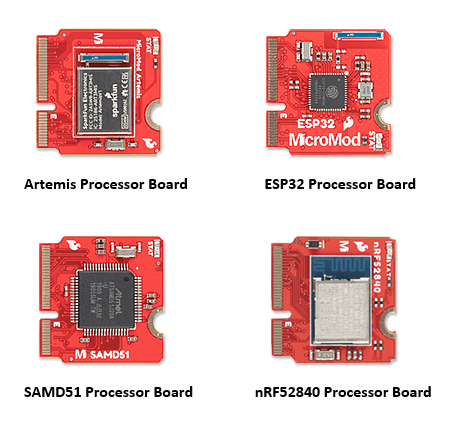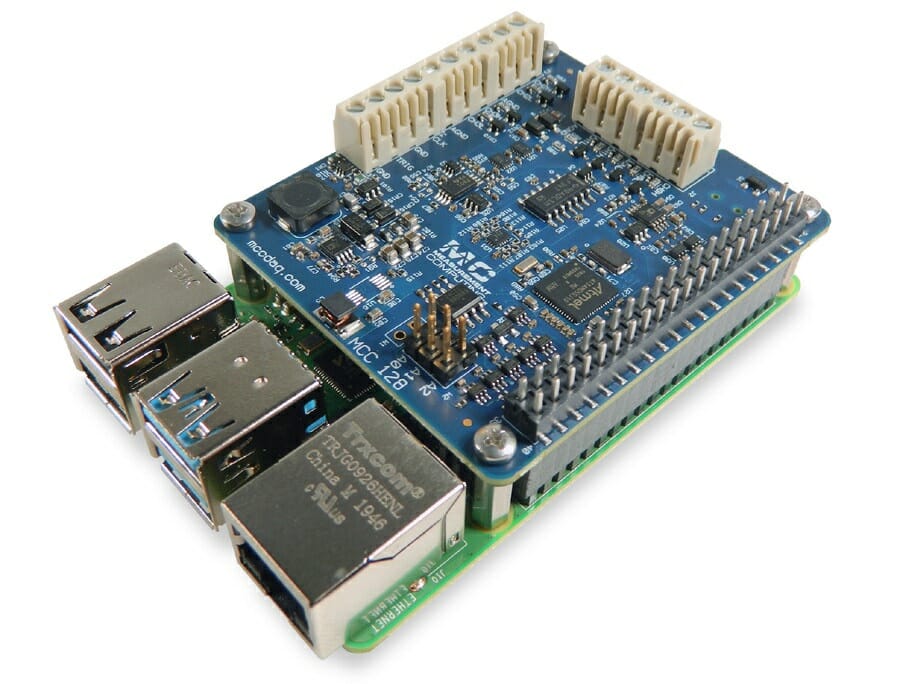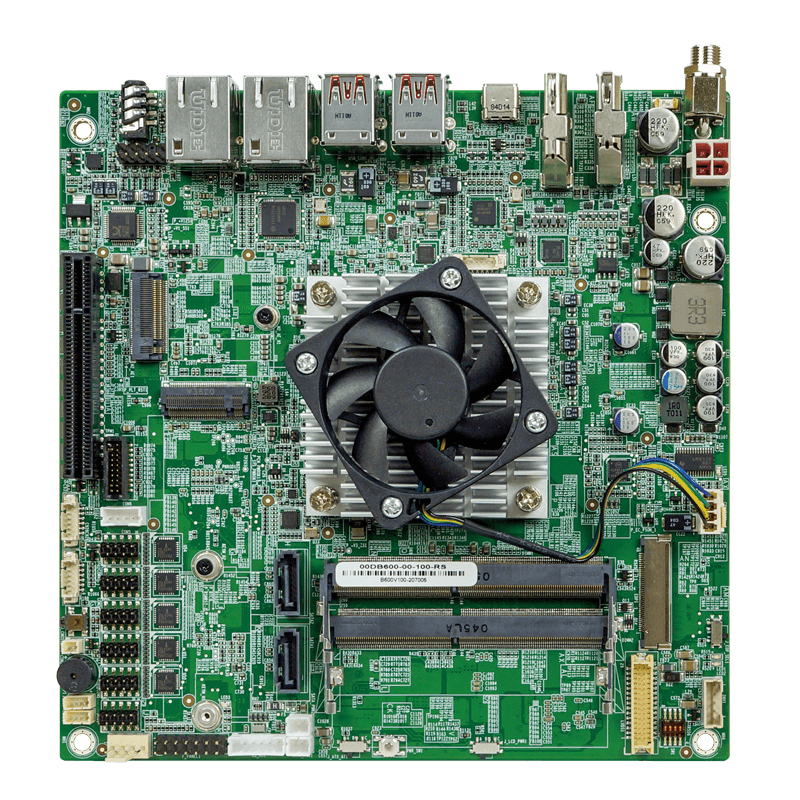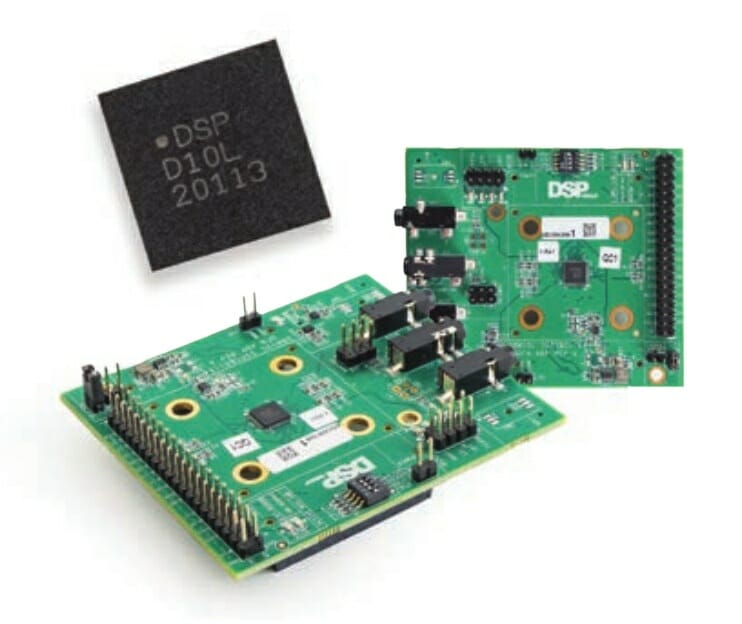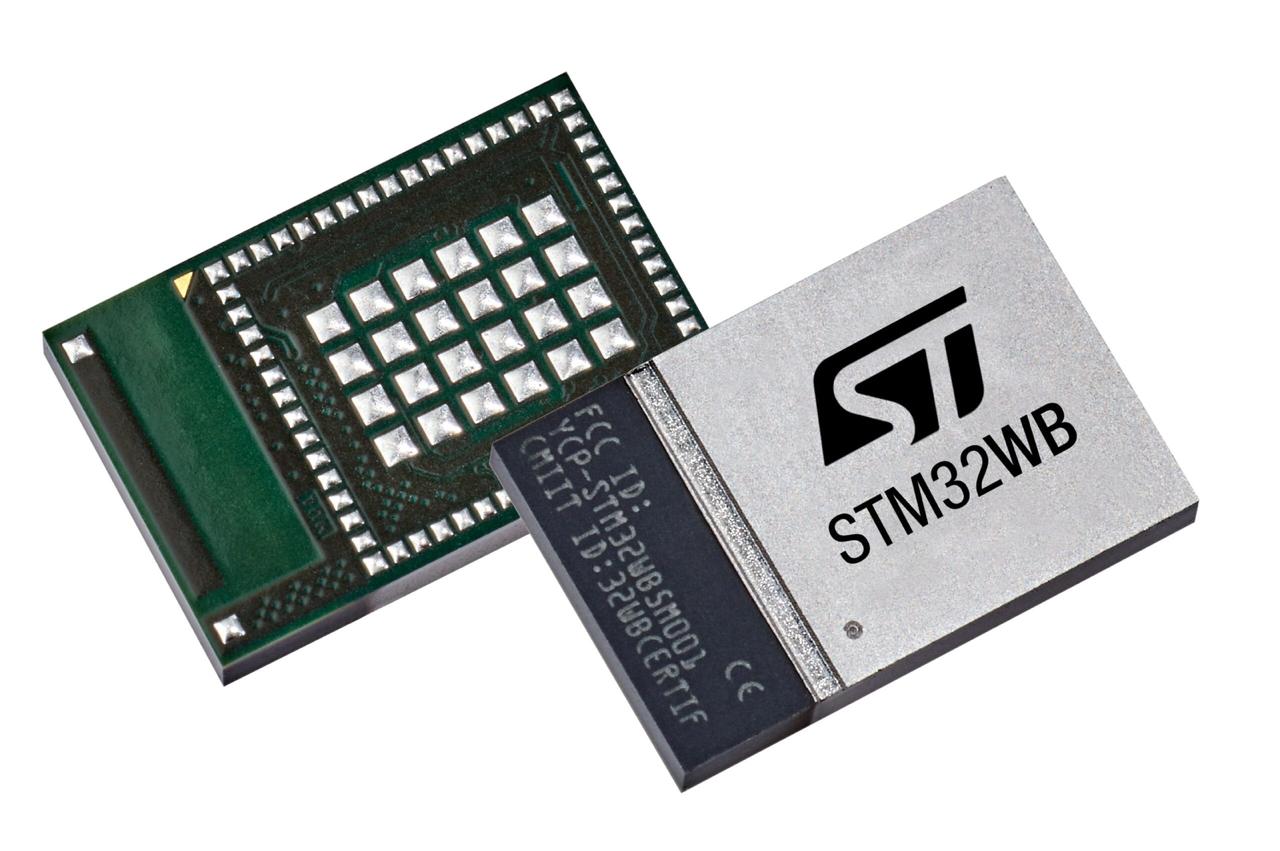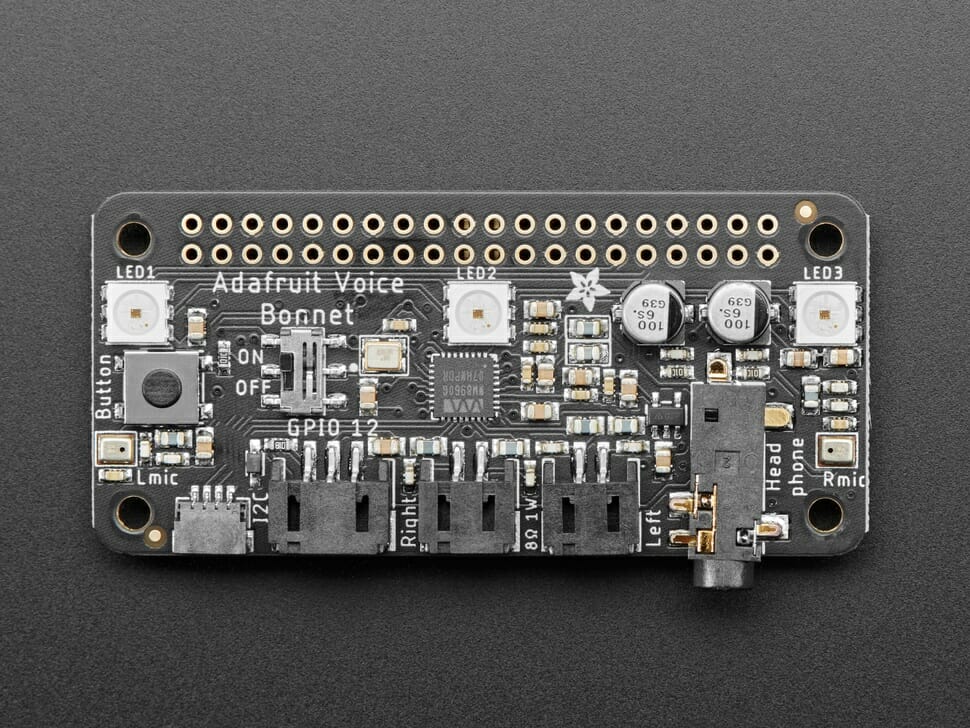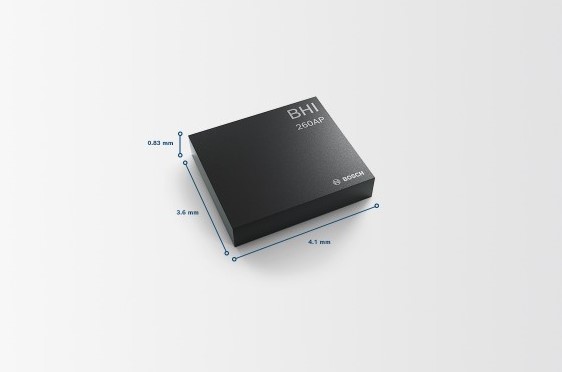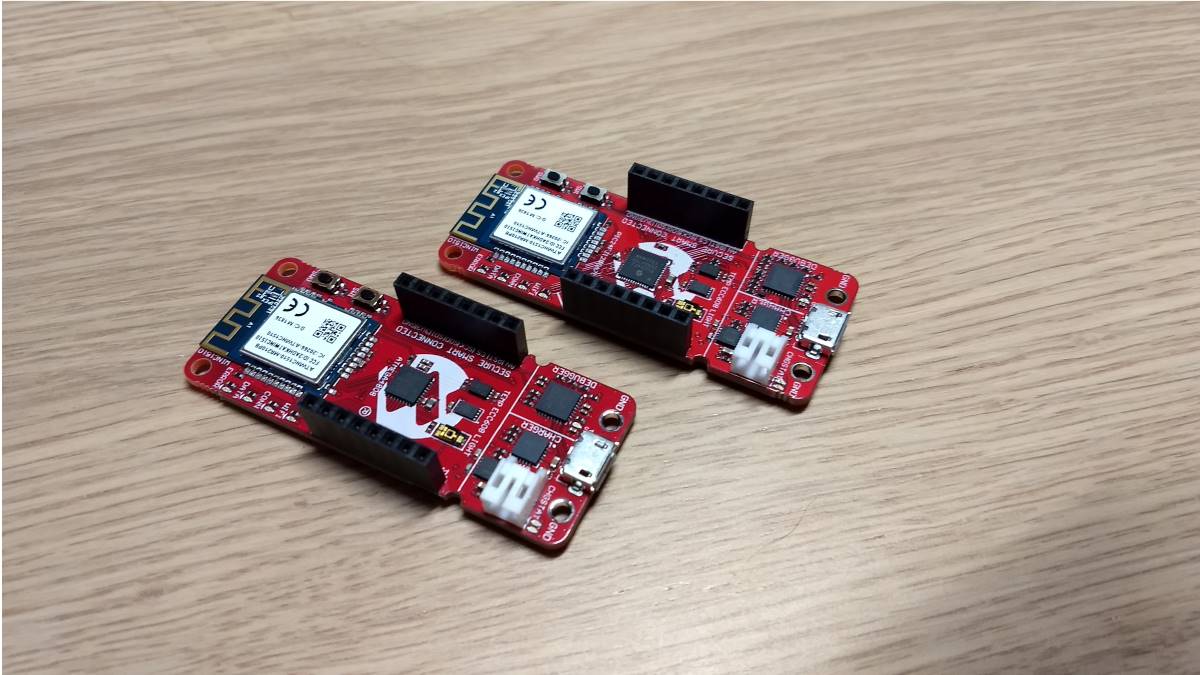MicroMod is a modular interface ecosystem for quick embedded development and prototyping. MicroMod comes with two components, that is a microcontroller “processor board” and a carrier board. PC industry’s M.2 connector is the interface between these two components. The carrier boards are for the usage of various peripherals and the processor board act as the brain of the application system. MicroMod processor board has a dimension of 22×22 mm that can be easily fitted on the carrier boards. Although, the original M.2 standard was dedicated to swapping out peripherals where a user could swap one component with the other one. The MicroMod standard is for swapping out microcontrollers according to the functional and application requirements. MicroMod Processor Boards Artemis Processor Board comes with an Ambiq Apollo 3 Blue Arm Cortex-M4F with BLE 5.0 running up to 96MHz and a power rating of less than 5mW. It also supports the TensorFlow […]
Voltage Measurement HAT for Raspberry Pi offers 16-bit analog inputs
MCC has launched the MCC 128 voltage measurement DAQ HAT for Raspberry Pi for data acquisition and data logging systems. It includes 8 analog inputs with 16-bit resolution for a range of -10V to +10 V at the data rate of 100 kS/s. This data rate can be increased by stacking up to 8 HATs for 64 channels of data which can produce a faster data rate up to 320 kS/s. The MCC 128 DAQ HAT is compatible with all Raspberry Pi models with the 40-pin GPIO header, excluding the original Pi 1 A or B with the 26-pin header. It is recommended to use the SPI interface for connecting LCD displays using the GPIO header. The configuration parameters of the board are stored in the EEPROM to allow automatic set up of GPIO pins to Raspberry Pi after the connection of the device. Key Features of MCC 128 DAQ […]
Mini-ITX SBC with Tiger Lake UP3 CPU offers dual 2.5GbE, quad display support
IEI launched tKINO-ULT6 is a Thin Mini-ITX SBC that comes with an 11th generation Intel core processor part of the Tiger Lake-UP3 CPU family. The tKINO-ULT6 Mini-ITX SBC also supports quadruple independent displays, SATA 6Gb/s, dual Intel 2.5GbE, HD audio, and RoHS. It can handle a wide range of input DC power from 9V to 36 V. The tKINO-ULT6 SBC is expected to be found in CNC (Computer Numerical Control) machines, real-time controls, human-machine interfaces, tool applications, medical imaging, and other applications requiring high resolution. Key Features of the tKINO-ULT6 Mini-ITX SBC Mini-ITX form factor with 11th Gen. Intel Tiger Lake UP3 Embedded processor, support for DDR4-3200 memory Video Output – Four independent displays via HDMI, DP, eDP/LVDS, USB4 Networking Dual Intel 2.5GbE LAN M.2 A key for WIFI+Bluetooth (PCIe x1/USB 2.0), M.2 M key for Storage (PCIe x2/SATA) Expansion – PCIe x8 Gen 4.0 slot The tKINO-ULT6 Mini-ITX SBC […]
DBM10 AI SoC is optimized for battery-powered voice and sensor processing
DSP Group announced DBM10 a low-power AI/ML-enabled dual-core SoC. The SoC is equipped with a DSP (Digital Signal Processor) and a dedicated nNetLite NN (Neural Network) processor that improves voice and sensor processing and ensures low-power consumption when working with sufficient-sized neural networks. Key Specifications of NN Processor Form factor: ~4 mm2 Ultra-low-power inference consumption – ~500 µW (typical) for voice NN algorithms Runs Hello Edge 30-word detection model @ 1 MHz (125 MHz available) Allows porting of large models (10s of megabytes) without significant accuracy loss using model optimization and compression. DBM10 AI SoC uses the combined functioning of machine learning, voice, and sensor parameters. This includes voice trigger (VT), voice authentication (VA), voice command (VC), noise reduction (NR), acoustic echo cancellation (AEC), sound event detection (SED), proximity and gesture detection, sensor data processing, and equalization. The DBM10 is suitable for battery-operated devices like smartphones, tablets, and wearables. It […]
STM32WB5MMG Wireless Module simplifies Bluetooth LE, Zigbee, OpenThread connectivity
The STM32WB5MMG (STM32) is a wireless microcontroller module by STMicroelectronics. It is a compact ultra-low-power module that allows customers to design 2-layer PCBs and integrates everything up to the antenna, including an IPD (integrated passive device) for reliable antenna matching in order to reduce the overall costs. The STM32 wireless module is compatible with BLE (Bluetooth Low Energy) 5.0, OpenThread, Zigbee 3.0, dynamic and static concurrent modes, and 802.15.4 proprietary protocols. It also supports simultaneous dual-protocol mode that allows IEEE 802.15.4 radio-based protocols like Zigbee 3.0 and OpenThread for direct connection with any BLE device. Overview of STM32 Wireless Module The STM32 wireless module is a SiP-LGA86 package (System in Package Land Grid Array) with various external components including: STMicro STM32WB55 Cortex-M4/M0+ wireless MCU LSE crystal HSE crystal Passive components for SMPS Antenna matching and antenna IPD for RF matching and harmonics rejection Key Features of STM32 Wireless Module Dedicated […]
Adafruit Voice Bonnet is meant for DIY Raspberry Pi Smart Speakers
Adafruit Voice Bonnet features two speakers and two mics, that can be used as an audio-voice interface for Raspberry Pi SBC to create a DIY smart speaker or other audio product. The voice bonnet can work with any Raspberry Pi from Pi Zero up to Pi 4, with 40-pin 2 x 20 connector. Two speaker outputs of the voice bonnet have a power rating of 1 Watt. The voice bonnet contains 3.5 mm stereo outputs, headphone stereo, or line-out audio. The Adafruit voice bonnet has an on-board WM8960 low-power stereo codec that uses I2S digital audio for both input and output. The WM8960 codec has a dual analog input, it consists of a left mic and a right mic. The codec integrates a complete microphone interface and a stereo headphone driver. Adafruit says “For DIY speakers, solder any 1W+ speaker to one of these JST 2-PH cables. If you’d like […]
BHI260AP is an AI smart sensor with built-in IMU by Bosch Sensortec
BHI260AP AI smart sensor integrates a 6-axis IMU, a 32-bit customizable programmable microcontroller, and various software functionalities. The AI smart sensor has embedded AI with on-sensor applications such as fitness tracking, navigation, machine learning analytics, and orientation estimation. The dimensions of the miniaturized AI smart sensor are 4.1mm x 3.6mm x 0.83 mm. Hardware Features of BHI260AP AI Smart Sensor ARC EM4 CPU includes ARCv2 16/32 bit instruction set working up to a frequency of 3.6 MHz. The core also integrates Floating Point Unit (FPU) and Memory Protection Unit (MPU) with 4 channel micro DMA controller. CPU has two modes of AI functioning at 25Hz and 50Hz with 249µA and 386µA of current consumption respectively. Integrated sensor (6-DoF IMU) includes 16-bit 3 axis accelerometer and 16-bit 3 axis gyroscope. The sensor works at an operating voltage of 1.8 V with a standby current value of 8µA, hence the power consumption […]
IoT development board comes with AVR or PIC MCU, WiFi module
Microchip AVR-IoT and PIC-IoT development boards have AVR and PIC MCUs respectively, which enables a simple interface between embedded applications and the cloud. The IoT development boards can securely transfer data to Amazon Web Services (AWS) IoT platform with a WiFi connection. The IoT development boards also include an onboard debugger which can be used to program and debug the MCUs without any need for external hardware. The IoT development boards also have an integrated lithium battery charger, which makes it a rechargeable device and allows easier deployment for a “ready-to-go solution.” The AVR-IoT WA development board integrates the ATECC608A CryptoAuthentication chip for security protocols and the ATWINC1510 Wi-Fi network controller for connectivity. The development board combines the ATmega4808 MCU 8-bit AVR MCU running at up to 20 MHz and offers a wide range of flash sizes up to 48 KB. The unit uses a “flexible and low-power architecture, including […]


